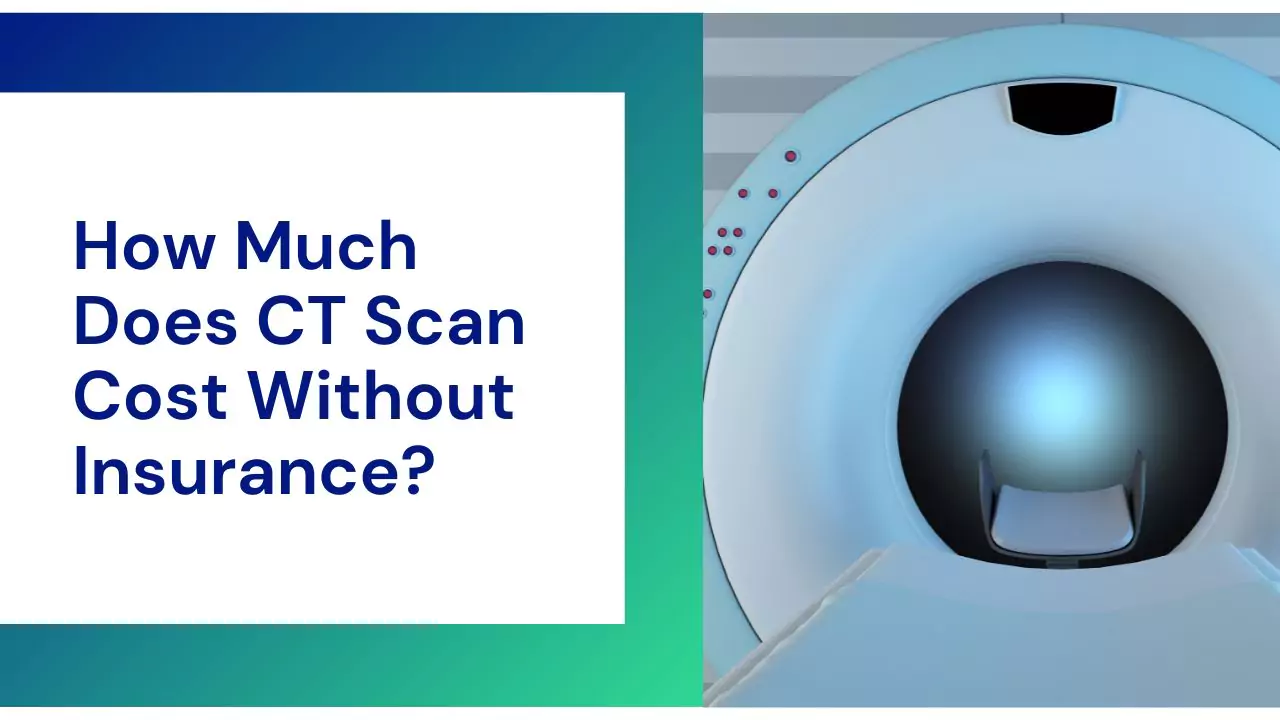A CT scan is a painless, noninvasive diagnostic test that uses X-rays and computer software to create detailed views of the body’s structure.
It can help detect various diseases, injuries, infections, and abnormalities. However, CT scans can be expensive, especially for people without insurance.
The average cost of a CT scan without insurance in the US is about $3,000, but it can vary depending on several factors.
The Factors That Influence The Cost Of A CT Scan
The cost of a CT scan without insurance can depend on:
- Scanned bodily part: The head and neck need simpler scans than the chest, belly, or pelvis. This affects scan duration, radiation, and contrast material.
- The use of contrast material: Contrast material is a substance that is injected into a vein or swallowed to enhance the visibility of certain tissues or organs on the scan. Contrast material can increase the cost of a CT scan by $100 to $500.
- The place of service: CT scan prices vary by location. Hospitals have greater overhead expenses and may charge more for facility utilization, equipment, and personnel than outpatient imaging facilities or clinics.
- The geographic location: The cost of a CT scan can also vary by region or state due to differences in demand, supply, competition, and regulation. For example, according to MDsave, the average cost of a CT scan with and without contrast ranges from $260 in Los Angeles, California to $1,993 in Philadelphia, Pennsylvania.
The Average Cost Range Of CT Scans Without Insurance
Based on the factors mentioned above, the average cost range of CT scans without insurance for different body parts can be estimated as follows:
| Body part | Average cost range |
|---|---|
| Head | $400 – $1,200 |
| Neck | $500 – $1,500 |
| Chest | $600 – $2,000 |
| Abdomen | $800 – $2,500 |
| Pelvis | $800 – $2,500 |
| Spine | $1,000 – $3,000 |
| Extremity | $400 – $1,200 |
These are only approximate figures based on national averages and may not reflect the actual prices charged by different providers or facilities.
Exploring Alternative Options For Diagnostic Imaging
People without insurance may have additional diagnostic imaging choices if a CT scan is too expensive or unavailable. Examples include:
- X-ray: Radiation pictures bones and certain soft tissues in a rapid and straightforward exam. It diagnoses fractures, infections, arthritis, and lung issues. CT scans cost $100–$500, whereas X-rays cost $100–$500.
- Ultrasound: Sound waves generate pictures of organs and blood arteries in a safe and painless ultrasound. It diagnoses gallstones, kidney stones, pregnancy, and cardiac disorders. Ultrasounds cost $200–$800, compared to CT scans.
- MRI: Magnets and radio waves provide detailed pictures of soft tissues and nerves in an MRI. It can detect cancers, strokes, MS, and spinal cord damage. MRIs cost $400 to $3,500 and do not utilize radiation, but they may give more information than CT scans.
Conclusion
Individuals lacking insurance requiring a CT scan could consider exploring more affordable or easily available diagnostic imaging options like X-rays or ultrasounds. Price comparison and negotiation for discounts with varied providers or facilities prior to the test is another viable path.
They could also look into securing financial aid or payment schemes from benevolent organizations, government initiatives, or healthcare providers offering services at little to no cost for uninsured or low-income individuals.
Healthcare access, a fundamental right for every individual, must be both affordable and available, irrespective of one’s insurance status. By enhancing the accessibility of healthcare, we can elevate health outcomes, diminish health disparities, and foster health equality for all.





